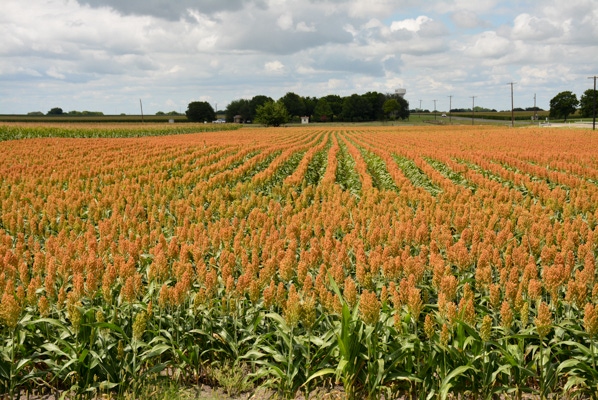
Like the popup showers that have dotted the state, the sugarcane aphid is starting to show up all over the South Plains and Panhandle, said Dr. Ed Bynum, Texas A&M AgriLife Extension Service entomologist in Amarillo.
“We’ve had reports in the past few days that sugarcane aphids have been found from Tom Green County up to Castro, Lubbock, Lamb, Hale, Gray and Carson counties,” Bynum said.

Sugarcane aphid control is important for grain sorghum production.
“To this point, they have been at non-treatable levels, but as we know, it does not take long for these populations to multiply into treatable levels,” he said. “We are advising producers to be diligent in their scouting and take actions before heavy infestations build up.”
AgriLife Extension entomologists have advised the threshold for treatment of the sugarcane aphid in the High Plains is when:
20 percent of plants are infested with 50 or more aphids in the pre-boot stage.
20 percent of the plants in the boot stage have more than 50 aphids.
30 percent infestation of plants in the flowering-milk stage with 50 or more aphids.
30 percent infestation with localized areas of heavy honeydew and established aphid colonies when plants are in soft dough and dough stages.
During black layer, when heavy honeydew and established aphid colonies are present, treat only for preventing harvest problems.
Application coverage continues to be important for control of the sugarcane aphid, Bynum said.
Aerial application recommendations are a minimum of 5 gallons per acre spray volume and ground applications are recommended to be 10 gallons per acre, he said.
For more information on sugarcane aphid treatment, the AgriLife Extension entomology team has established the Texas Sugarcane Aphid News blog, found at http://txscan.blogspot.com/. This will report up-to-date sightings and other relevant information
About the Author(s)
You May Also Like




